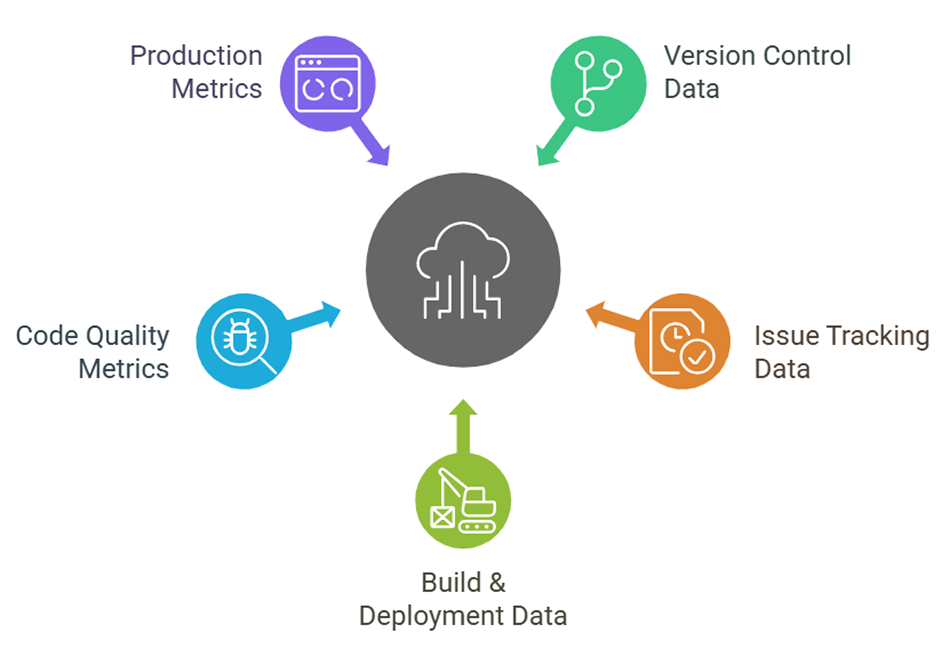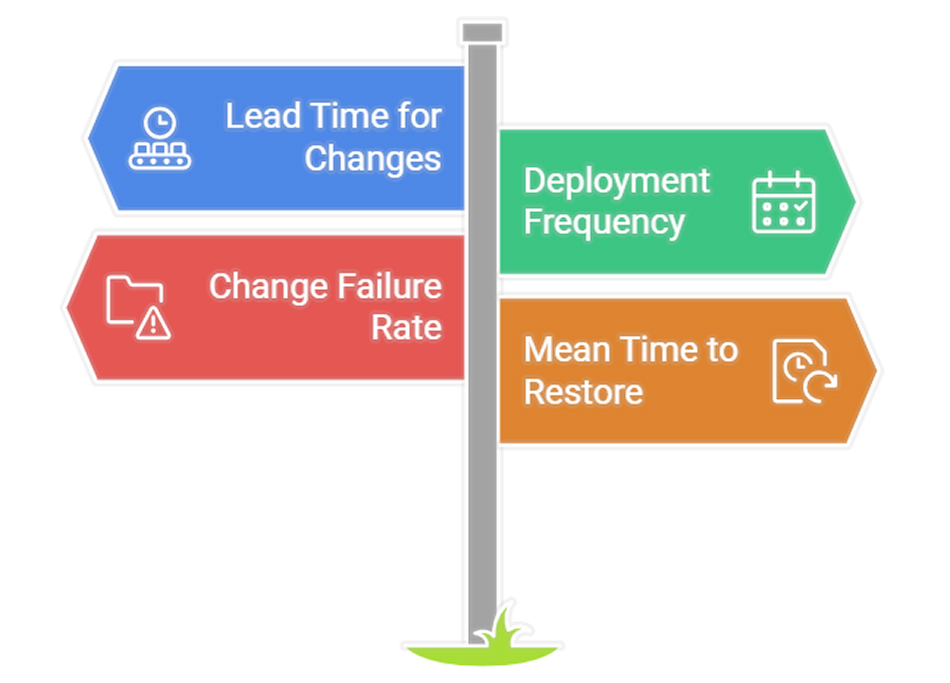Software engineering intelligence refers to using data, analytics, and AI for software engineering to enhance the overall software development lifecycle. It integrates engineering concepts with business intelligence to enhance decision-making, workflow optimization, and software quality improvement. As modern software systems grow in complexity, software engineering intelligence becomes increasingly important to enhance productivity, find inefficiencies, and ensure alignment with company objectives.
Understanding Software Engineering Intelligence
Software engineering intelligence involves collecting, analyzing, and acting on data from various stages of software development. It helps engineering leaders answer critical questions such as:
- How efficiently are teams delivering software?
- Where are the bottlenecks in the development process?
- Are quality issues increasing over time?
- What is the impact of changes on overall system stability?
- Are teams following best practices and coding standards?
Software engineering intelligence provides actionable insights by integrating data from source control systems (like Git), task management tools (such as Jira), CI/CD pipelines, code reviews, test results, and production monitoring. It enables organizations to move from decisions based on gut feelings to data-driven engineering practices.
Key Components of Software Engineering Intelligence
A software engineering intelligence platform comprises four main components:
1. Data Collection

Software engineering intelligence begins with collecting raw data from various tools and systems used in the software development lifecycle. These include:
- Version control data: Commit frequency, code churn, and merge request sizes.
- Issue tracking data: Time to resolve issues, backlog growth, and sprint velocity.
- Build & deployment data: Build success rates, deployment frequency, and rollback occurrences.
- Code quality metrics: Test coverage, static analysis reports, and bug density.
- Production metrics: System uptime, error rates, and latency trends.
By aggregating data from these sources, organizations create a unified view of engineering performance.
2. Data Processing & Analysis
Then, the raw data is processed and analyzed to extract meaningful insights. Machine learning and statistical models can detect patterns, correlations, and anomalies. Examples include:
- Identifying high-risk code changes by analyzing commit history.
- Detecting bottlenecks in CI/CD pipelines affecting delivery speed.
- Predicting developer burnout risks based on workload trends.
- Assessing technical debt accumulation using code complexity metrics.
Advanced analytics platforms use AI to surface hidden inefficiencies, helping teams make proactive improvements.
3. Visualization & Dashboards
To make data actionable, software engineering intelligence tools present insights through dashboards. These dashboards enable stakeholders to track key performance indicators (KPIs) in real time. For example:
- Engineering managers can monitor developer efficiency, sprint velocity, and bug resolution rates.
- Developers receive feedback on coding practices, PR review times, and test failures.
- SREs & DevOps teams track system reliability, incident response times, and deployment health.
Popular software engineering intelligence tools like Code Climate, LinearB, and Flow provide these visualizations, allowing organizations to track engineering health at a glance.
4. Decision Automation & Recommendations
The final stage of software engineering intelligence involves using insights to drive automation and recommendations. Examples include:
- Automated code reviews: AI-driven tools like GitHub Copilot or SonarQube flag issues before merging.
- Optimized team assignments: Identifying developers best suited for specific tasks based on past performance.
- Proactive incident management: Alerting teams when production metrics show anomalies.
- Data-driven sprint planning: Adjusting team workloads based on historical velocity trends.
By embedding intelligence into workflows, software engineering intelligence reduces manual overhead and enhances efficiency.
How to Implement Software Engineering Intelligence
Implementing software engineering intelligence in your organization is straightforward. Here are the steps you need to follow.
Step 1: Define Key Metrics

Identify the most critical engineering metrics for your team. Some common ones include:
- Lead time for changes: Time from the first commit to production.
- Deployment frequency: How often software is released.
- Change failure rate: Percentage of deployments causing issues.
- Mean time to restore (MTTR): Time taken to recover from failures.
Step 2: Integrate Data Sources
Software engineering intelligence works best when data from multiple engineering tools is aggregated and analyzed in a unified view. You can integrate tools like:
- Version control systems (GitHub, GitLab, Bitbucket): To track commit history, code changes, and review cycles.
- CI/CD pipelines (Jenkins, CircleCI, GitHub Actions): To measure build success rates, deployment times, and rollback frequencies.
- Issue tracking systems (Jira, Linear): To track backlog management, sprint velocity, and bug resolution times.
- Observability and monitoring tools (New Relic, Datadog, Prometheus): To monitor production health, error rates, and performance trends.
Step 3: Use AI & Automation
Software engineering intelligence is most effective when AI-powered analytics are used to detect patterns, predict risks, and automate decision-making. You can use tools like:
- Milestone AI: Provide powerful features for complete GenAI adoption and management.
- GitPrime: Provides insights into software team productivity using Git analytics.
- Jellyfish: Provides visibility into engineering workflows and team performance.
- Pluralsight Flow: Analyzes development activity and identifies areas for efficiency improvement.
- SonarQube: Automates static code analysis to enforce best practices and improve code quality.
Step 4: Build a Data-Driven Culture
The success of software engineering intelligence depends on how well your teams embrace data-driven decision-making rather than relying on assumptions or intuition. Encourage:
- Transparency: Make software engineering intelligence insights accessible to all engineering stakeholders.
- Collaboration: Use data to improve workflows rather than micromanage individuals.
- Continuous feedback: Encourage teams to use software engineering intelligence dashboards to self-assess and optimize performance.
Step 5: Continuously Improve
Software engineering intelligence is an iterative process. It should evolve as your organization’s needs change. By continuously analyzing, iterating, and refining, organizations can maximize the value of software engineering intelligence and ensure long-term success.
Conclusion
Software engineering intelligence has revolutionized the way organizations approach software development. It has made workflows more visible to teams and provides them with the intelligence to work more efficiently and improve the quality of the software. Software engineering intelligence will help teams become more effective in engineering when it comes to minimizing delays in code reviews, increasing developer efficiency, and preventing outages.
As organizations continue to embrace software engineering intelligence, teams that use data-driven decision-making will gain a competitive edge in delivering reliable, high-quality software. So, now is the time to invest in software engineering intelligence and unlock the full potential of your engineering teams.
